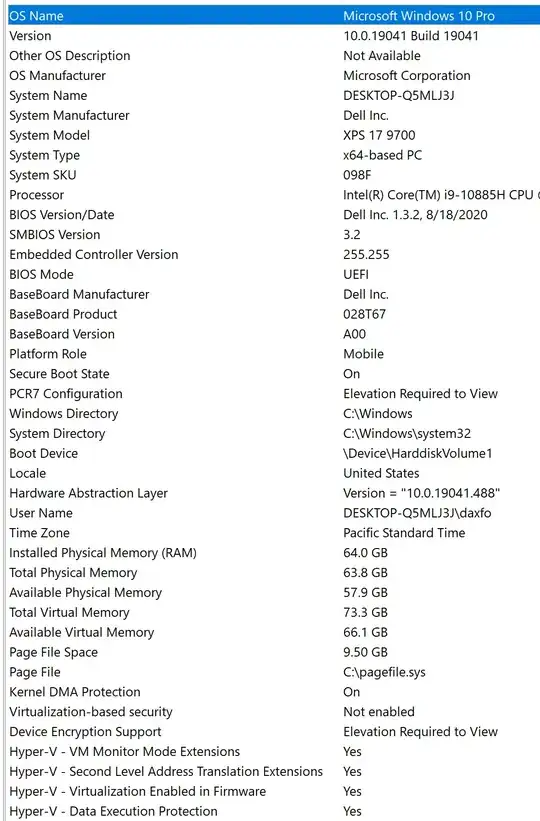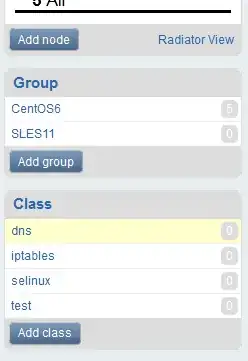I'm trying to follow this tutorial to run KVM nested in WSL 2, but after following the directions through compiling the kernel and loading it, the test kvm-ok reports that KVM is not supported.
I've tried multiple options: enabling hyper-v, disabling it, verifying BIOS/CPU support, enabling/disabling Device Guard, other steps in some vmware docs (bcdedit /set hypervisorlaunchtype, suboptions under gpedit/DeviceGuard).
When I do disable hyper-v, set hypervisorlaunchtype off, and disable Device Guard, then I get the following options in system info, but then wsl2 fails to launch at all, saying "Please enable the Virtual Machine Platform Windows feature and ensure virtualization is enabled in the BIOS."

 Any other configuration I try, sys info says that a hypervisor is running and won't show the hyper-v values, but I end up running into the initial problem of KVM not being supported in WSL2. Also if I try enabling "Virtualize Intel VT-x/EPT" in VMWare Player, that fails to launch as well.
Any other configuration I try, sys info says that a hypervisor is running and won't show the hyper-v values, but I end up running into the initial problem of KVM not being supported in WSL2. Also if I try enabling "Virtualize Intel VT-x/EPT" in VMWare Player, that fails to launch as well.
Stepping back, ultimately what I'm trying to do is run the firecracker demo on my windows laptop. So if there's an easier way to do this then lmk.
Update
I noticed it works in VMWare Player with an Ubuntu image. Or at least, kvm-ok reports that it's enabled, /dev/kvm exists. I'd still rather use WSL2. But it's refusing to load.